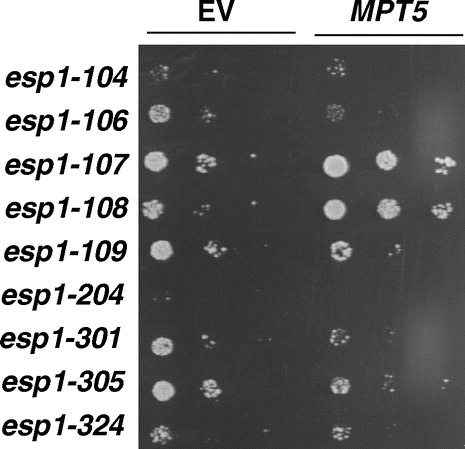Figures & data
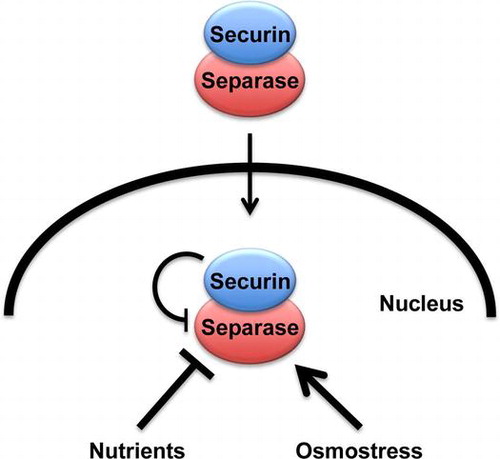
Fig. 1. Isolated esp1-ts mutants are defective in sister chromatid disjunction.
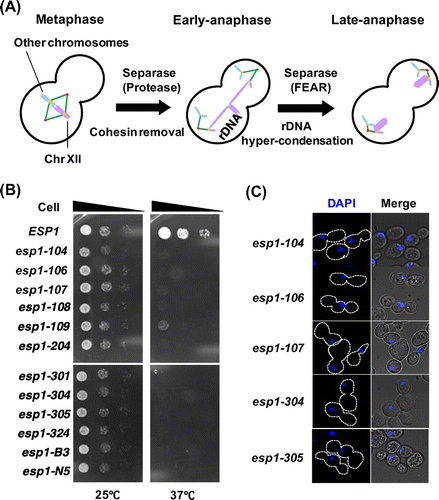
Fig. 2. Some esp1-ts are hypersensitive to microtubule and DNA damage.
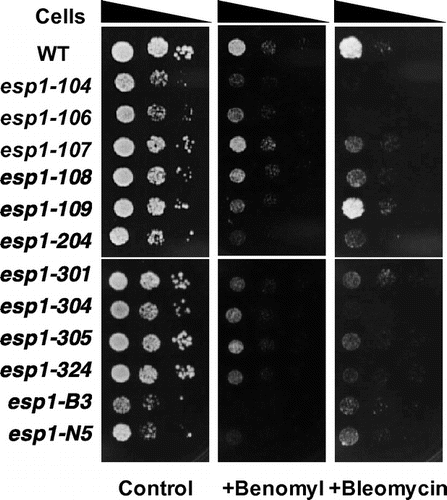
Table 1. Summary of phenotypes of esp1-ts mutants.
Fig. 3. Carbon-poor conditions alleviate the temperature sensitivities of some esp1-ts mutants.
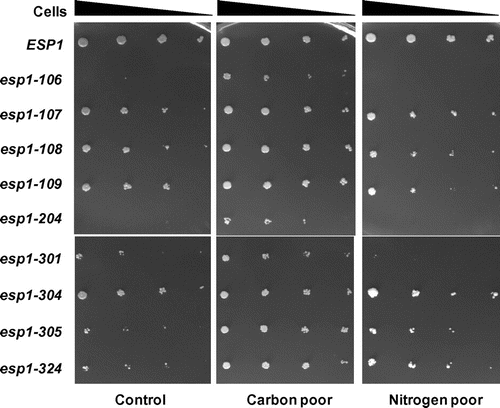
Fig. 4. Osmotic stress alleviates the temperature sensitivities of some esp1-ts mutants.
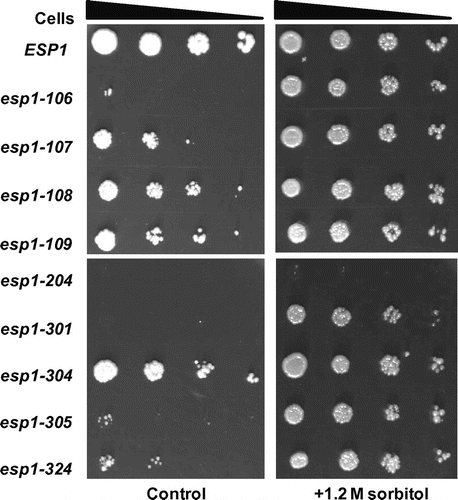
Fig. 5. Effects of overexpression of securin on esp1-ts mutants.
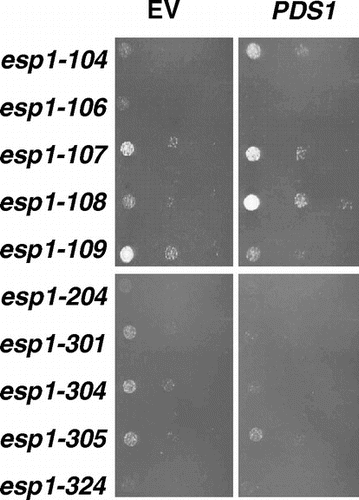
Fig. 6 Effects of overexpression of MPT5 on esp1-ts mutants.
